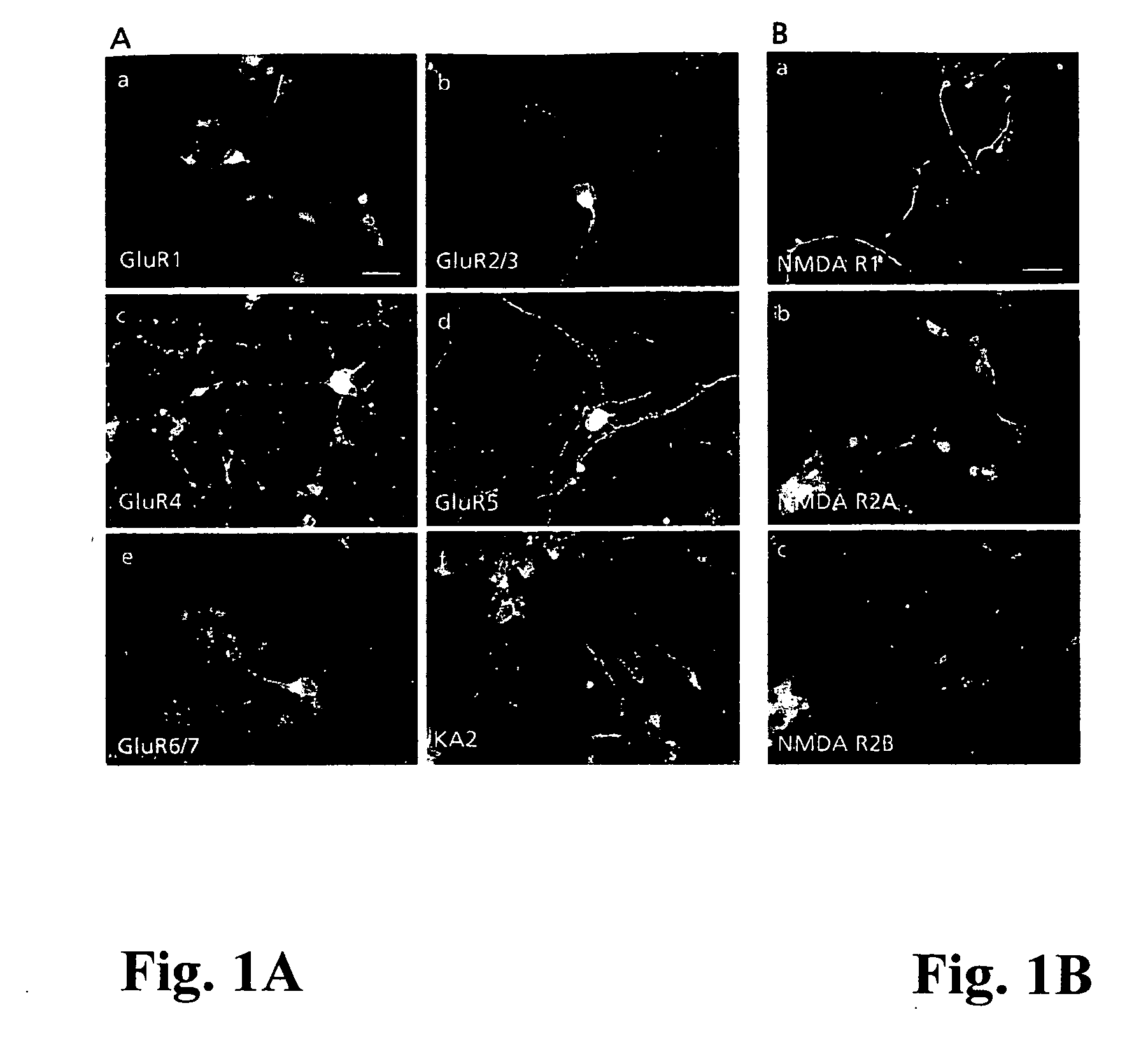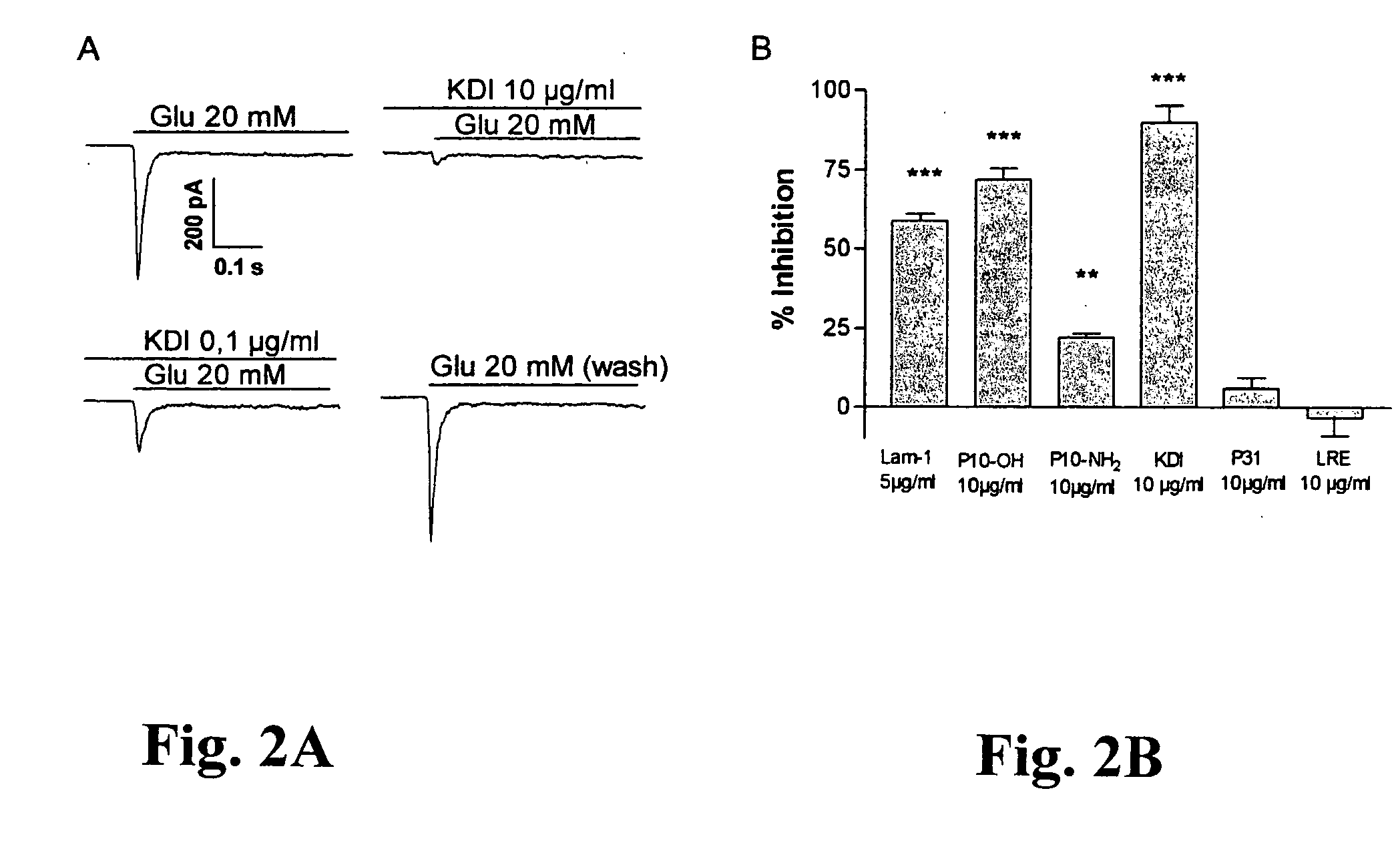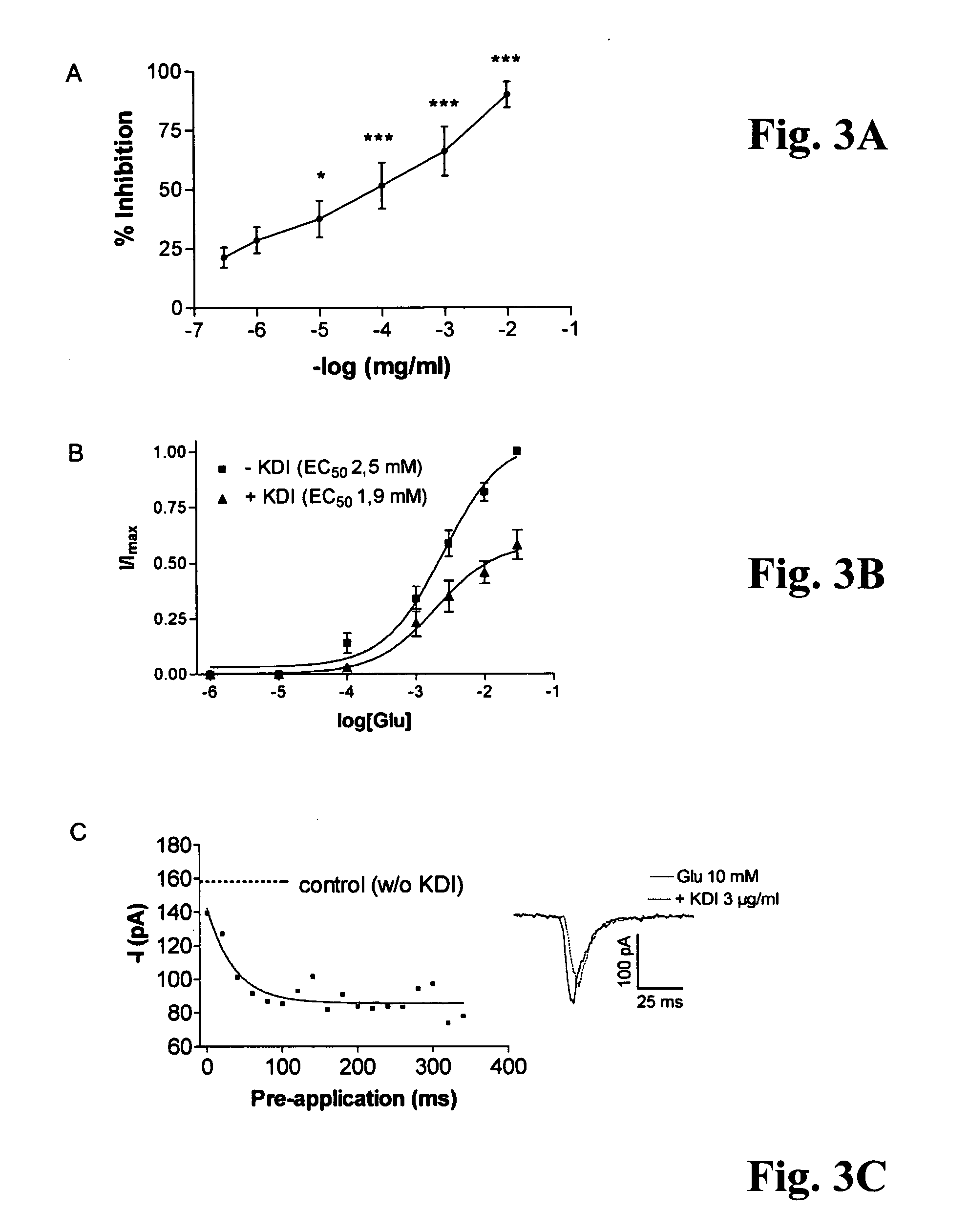Biologically active peptides as glutamate receptor inhibitors
a technology of glutamate receptor and biological active peptides, which is applied in the direction of dipeptide ingredients, tripeptide ingredients, animal/human proteins, etc., can solve the problems of dose-dependent, non-competitive, and reversible inhibition
- Summary
- Abstract
- Description
- Claims
- Application Information
AI Technical Summary
Benefits of technology
Problems solved by technology
Method used
Image
Examples
Embodiment Construction
idate the possible interaction of the KDI-domain of γ1 laminin with the glutamate receptor function, we used immunocytochemistry and patch clamp configuration on human embryonic neocortical neurons cultured on a poly-D-lysine substratum. In addition, we applied patch clamp studies on HEK 293-cells expressing recombinant AMPA, and kainate receptor subunits. Immunocytochemically, neocortical neurons expressed all subclasses of glutamate receptors tested, but both expression patterns and subunit compositions showed considerable variation (FIG. 1A-B).
[0039] Consequently, in FIG. 1A immunocytochemistry for AMPA (GluR1, GluR2 / 3, GluR4), and kainate (GluR5, GluR6 / 7, KA2) glutamate receptor subunits in human embryonic neocortical neurons indicates that several different ionotropic glutamate receptor proteins are expressed, and their expression patterns show considerable variation. For example, the GluR1 receptor subunits are mainly expressed in cell bodies, while the GluR2 / 3 subunits are st...
PUM
| Property | Measurement | Unit |
|---|---|---|
| concentrations | aaaaa | aaaaa |
| concentration | aaaaa | aaaaa |
| concentration | aaaaa | aaaaa |
Abstract
Description
Claims
Application Information
 Login to View More
Login to View More - R&D
- Intellectual Property
- Life Sciences
- Materials
- Tech Scout
- Unparalleled Data Quality
- Higher Quality Content
- 60% Fewer Hallucinations
Browse by: Latest US Patents, China's latest patents, Technical Efficacy Thesaurus, Application Domain, Technology Topic, Popular Technical Reports.
© 2025 PatSnap. All rights reserved.Legal|Privacy policy|Modern Slavery Act Transparency Statement|Sitemap|About US| Contact US: help@patsnap.com



